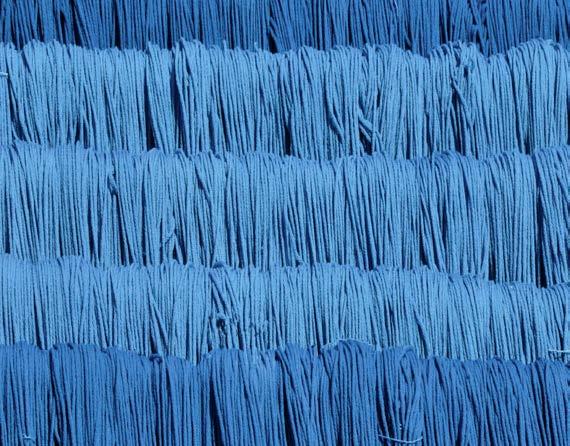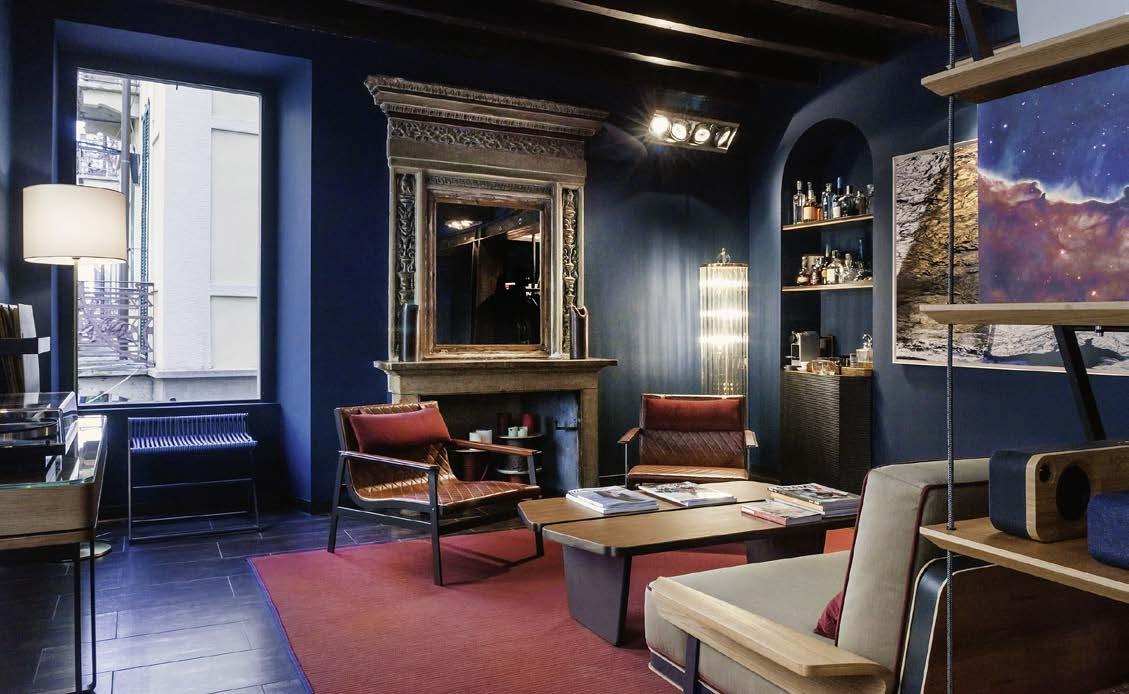
9 minute read
We Listen Carefully
Franco Loro Piana “We Listen Carefully.”
Loro Piana is a name that harbours commitment. Instead of feathering a pre-made nest, the brothers Franco and Giacomo Loro Piana set out to create a brand according to their own ideas. Sease stands for the love of outdoor sports and blends it with urban styles. Even the brand’s self-definition speaks vol- umes: “Escaping from your usual routine is a matter of choice, an attitude. It requires energy, imagination, some madness.” The name is a combination of the label’s two pillars: “SEA like the ocean. EASE like release the pression and chase freedom.” In an interview with style in progress, Franco Loro Piana allows deep insights into the soul of an entrepreneur who knows and respects tradition just as much as start-up spirit. Much of what the brothers exemplify with their young business is part of the survival kit of every brand keen on a successful future. It be- gins with modern technology and season-independent design. It results in sustainability and transparency. Franco Loro Piana describes the company, which was launched four years ago, as the crew of a sailing boat. No coincidental comparison, as the reputation of the Loro Piana dynasty doesn’t rest solely on fabric production and luxury items. Italian sailing enthusiasts speak of the family with great respect too. Interview: Martina Müllner-Seybold. Photos: Gianmario Ledda, Sease.
Does future require roots? For sure. Merging heritage with research and innovation leads to a more consistent vision of the market, the product, and the whole value chain. We have to understand that not all practices from the past were completely wrong per se. Take genuine raw materials, such as wool, that are by definition sustainable and easier to degrade. Of course, re-engineering production logistics and investing in continuous improvement, as well as more contemporary best practices, allow for better standards overall.
You are part of a new entrepreneurial generation in Italy. Why was it so important to you to launch your own business and brand?
Cultivating first-hand knowledge and a legacy within the whole process, together with direct experience in retail and branding with visionaries such as my father and uncle, and being in close contact with remote markets, has not only encouraged me to expand my academic credentials, but has also increased my passion for the business and outdoor sports even further. To the extent that, after a phase of research that led to more self-aware

ness, I decided, together with my brother Giacomo, to shift our attention towards the idea of creating a contemporary wardrobe to mirror such passions. Launching the Sease project, which represents new territory for us, is our way to combine such roots with a proprietary vision. It’s a commitment to offering a lifestyle response to the contemporary menswear market, inspired by an active attitude and a more minimalistic approach.
What do you think are the main differences in your business approach to that of your father’s generation?
Generally speaking, today’s market is over-saturated, which is why all cultural contents, from the values behind the brand to the lifestyle and communities around it, have made it even more necessary to stand out from the crowd - not to mention product and style. To do so in a consistent way, we nurture authenticity at all levels in exactly the same way our family has approached the business in a very vertical way throughout generations. Unwillingness to accept compromises, paying attention to details, and a strict focus on quality, as well as a genuine - yet careful - strategic approach, are part of the Sease vision. Nevertheless, everything is based on the product itself and the all-important innovation in terms of processes, materials, and design.
What makes the clothing industry attractive to young talent?
I think it must be the opportunity to express yourselves with excellent design (form follows function), as well as to anticipate trends by listening to both street culture and your personal sources of inspiration, be it music, sports, or art. It is a field where, despite massive changes, there’s still a lot to be said and done. Nobody can survive without clothing. Fashion isn’t merely practical; it is a way to express yourself, both for creatives and consumers.
Naturally, everybody dreams about being a successful designer. Italy is facing a huge challenge in terms

of finding skilled workers capable of implementing design visions. Older employees are retiring, while young people have, more often than not, little interest in working in a factory. How do you think your country can solve this problem?
There have already been some tentative attempts by private investors to invest in internal schools and academies. From a public perspective, some of our universities are still leading the way in terms of design, while art schools may opt for a more practical approach. But I am quite optimistic that craftsmanship and new technologies can be combined and that the teaching process can benefit from this perspective.
Can technology help? By making the work more attractive or by replacing manual workforce?
In my opinion, technology is utterly powerless without the support of the human brain. But all jobs can, of course, benefit from new technologies and machines. By utilising technology to support both human kind and productivity, we can save energy, time, and effort in ways that were unthinkable in past centuries, if not ages. Just think about the use of drones in agriculture and the logistics revolution in general.
Does this require new corporate structures? Please explain the difference between Sease’s structure and that of traditional businesses.
Given that we are just coming out of the start-up phase, we define Sease as a company with a leaner structure. We perceive ourselves as a more robust version of a sailing team. We encourage talent and team-work, as a young company like ours requires a certain flexibility. Given that Sease was only founded four years ago, this can be implemented more easily. We are small, cohesive, and inclusive. We listen carefully and can incorporate the vision of both young and more mature talents.
Do you think fashion has to change to be attractive to a new generation of consumers? If yes, what has to change? The style and design, the general approach, the prices, or the branding?
Fashion is, by definition, change. Naturally, millennials demand that a brand represents an increasing number of values. They ask for evidence of any business commitment towards the environment, society, and working conditions. Both transparency and collaboration in terms of sustainability are vital, especially at this stage in our development. Educating customers while listening to their needs is crucial.
How do you define luxury today?
A good life balance, allowing time for both oneself and maximum efficiency at work. One needs to find time to escape and use technology in a way that allows one to make the most of it.
Sease has a completely different approach to collections. You don’t rely on trends or seasons, but on kits for specific occasions and sports. How come?
While we still respect seasonal needs, especially in terms of wholesale, we fully understand that a contemporary wardrobe should be essential, multi-purpose, and durable. Sports are a starting point for kits that allow for outdoor usage in the city, while our urban kits are highly technical and comfortable to allow for swift movement. The idea of kits reflects the philosophy that the modern man is well-travelled, active, and style conscious, but is not willing to compromise on comfort. The whole concept actually stems from the idea of a bag used for collecting and taking home the memories of a day at the ocean. That was years ago. This resulted in the development of “Guardaroba Contemporaneo”, which we are still pursuing to this day. One example is the Drone Release at the Pitti in January 2019.
You care a lot about the environment. Do you think that luxury items, as well as accessible luxury clothing, need to be “green”? Do you think consumers will tolerate a brand in the upscale price segment that doesn’t commit to environmental protection? Is sustainability a must-have?


Definitely. Going green will be virtually compulsory soon. The day will come when not having invested in sustainability, by which I mean actually acting instead of just talking, is beyond risky. Other than a marketing tool, it must be considered as a core value for every new brand and for brands that wish to remain competitive alike.
Your style is modern and high-tech, but you also draw inspiration from traditional fabrics and knits. Can you shed some light on your development process?
We basically develop at different levels in cooperation with Moreno Ferrari, our creative partner, and our inhouse production team. We love projects that combine our style with heritage and the rediscovery of old techniques, for example the pieces dyed with woad pigment or made of 100 percent Visso wool. We go as far as creating new materials or re-engineering previous ones. One example is Sunrises, a Solaro fabric that combines wool and bio-based nylon.
Why are sports so influential in fashion these days?
I think this is a new form of what I call power dressing. What one wears is comfortable and practical, but also focuses on the human body and its performance.
Sport is not your only source of inspiration. You’ve created SeaseRPM. Tell us about it…
SeaseRPM, which stands for “Rarities Photography and Music”, is our selection of vinyl records, hi-fis, prints, books, and rarities that creates an intimate space to which customers return gladly, just to see what’s new.
It’s a curated choice that turns Sease stores into a point of interest for audiophiles and collectors, as well as a location for DJ sets and/or talks with brand ambassadors. It creates a mixture of a reference point for locals and day-trippers who could potentially bump into an artist or walk straight into a live jam session.
It sound like you’ve adapted the classic skater shop to your target group. Why is a stationary store still such a powerful brand building tool in these modern and digitised times?
Our stores are concept stores, places where you can spend time and be inspired. At the same time, they allow for communicating the lifestyle and values of the brand. No digital experience works without analogue support. We both picked key contemporary locations, such as the Pitti and certain resorts, to make this process more consistent and build true communities around the brand.
Do you think this will ever change? Or will the physical store always be an important factor for marketing a brand and its mission?
The purchase process will definitely change. Our e-commerce warehouse for sease.it, which serves Europe and the UK, already allows for joint data management and is highly reactive. Physical stores will become increasingly personalised destinations and allow for such an integrated approach.


